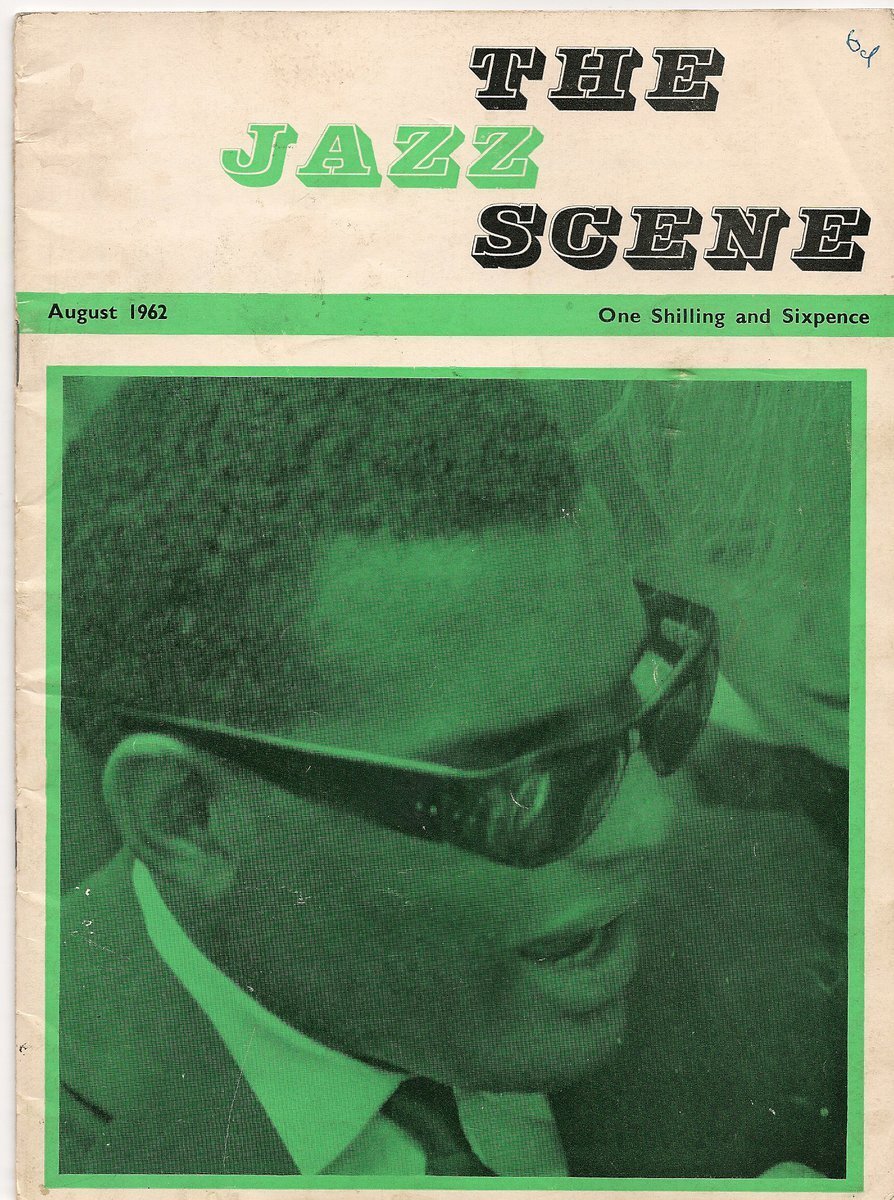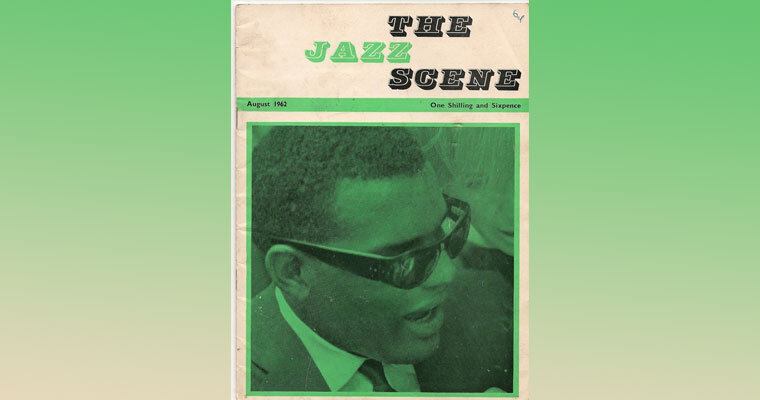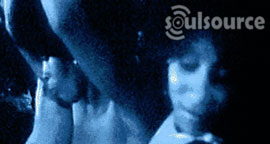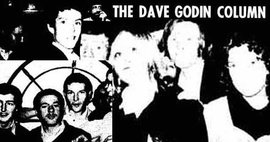Further to the two articles I've previously posted about the early Blues & Soul Magazine I've dug out my copy of the Jazz Scene Magazine from August 1962, I was a sprightly 15 year old at that time. It cost me one shilling and sixpence!
I bought it because Ray Charles was on the cover. I've recently re-read the Alexis Korner article ‘Tin Pan Alleleujah’ and I thought it was interesting because he was clearly trying to come up with a word for the fusion of Gospel & R&B that became known as ‘Soul’ and came up with ‘Gospop’!
Thankfully it didn't last and ‘Soul’ stuck!
I think the article is a good example of how the birth of Soul was being delivered in the media. I was buying Record Mirror at the time and Norman Jopling in particular was championing the ‘new sound’ in the mainstream press and highlighting artists such as The Isley Bros & James Brown in his articles.
Record Mirror used to have an annual poll of favourite artists and the winners of the Best Female Group in 1962/3 was The Miracles! At least people were listening to their records.
Anyway I hope you enjoy reading about the early beginnings of this scene we love so much.
Cheers, John
Tin-Pan-Allelujah
ALEXIS KORNER writes about
'Gospop' the fusion of hot Gospel and Rock which has stormed the Hit Parades since the advent of Ray Charles
THERE are people, the Knowledgeable Ones, who will tell you that they can predict what material will get into the Top Twenty. They, of course, knew that "Petite Fleur" was a certainty, that "Stranger On The Shore" was bound to become No. I in the States, and that Bruce Channel was going to score with "Hey Baby". One or two of these people, I remember, told me so... just after the event. The fact is that only a fool will try to tell anyone exactly what will sell in three months time; a fool, or a man with the Delphic Oracle on his side.
About three years ago, by some strange chance, Alan Lomax said that, quite soon, the Blues would be a selling factor in the pop market. This may have been sheer guesswork but it turned out to be at least half right.
However, I doubt if he, or anyone else for that matter, could have envisaged a British Top Twenty as heavily influenced by Negro music-Blues or Gospel as that of today. After all, it is only in the last nine months that Ray Charles has really started to sell here. And with the success of "Hit The Road Jack", a flood of Gospel/Blues discs has swept into various charts. Skiffle, Rock and the Twist have all played their parts in this and the two artists who, directly or indirectly, have exerted the greatest influence on the present trends are Ray Charles and Elvis Presley.
The public owes its familiarity with the 12-Bar Blues and Negro source material of this type to Presley. In fact it would be very difficult to over estimate his importance in this respect. His influence was both world-wide and direct.
Ray Charles, on the other hand, has been a big seller in the United States for some years, without making any real impact elsewhere. Yet, when one counts the name singers who have sold well with Ray Charles material such as "Allelujah, I Love Her So" and "What'd I Say", the strength of his indirect influence on our market will be obvious.
Though still in his very early thirties, Ray Charles has been a professional musician for just over seventeen years. Both his parents died when he was fifteen and Charles, with no relatives to keep him at school, started to earn a living with local bands in Florida. As his knowledge of music was, even then, quite considerable, he soon established a considerable reputation. Within two years he had formed his own trio.
It was only then, and quite accidentally, that he began to sing. His reputation as a musician-both his piano and his alto saxophone playing were beginning to attract some attention was growing rapidly. So was the interest in his fiery arrangements. He had not then learned to use Braille notation, so he hummed the various parts to his sidemen.
After a very short time, it bore in upon Charles and the band that there was a special quality in his voice, an exciting mixture of Rhythm-&-Blues and Gospel in his phrasing. So Ray Charles decided to try singing in public.
By 1956, he was getting disc after disc into the R-&-B charts and then, with "Allelujah, I Love Her So", he suddenly found himself in the Pop charts as well.
It was now that Charles, always a fervent collector of Gospel records, started to record such material as "This Little Girl Of Mine", an old-time Gospel song still popular in the U.S. Though its original title was "This Little Light Of Mine", there did not appear to be any great outcry against Ray Charles "lay" version. The thousands who turned out for concerts by Mahalia Jackson still seemed quite happy with Ray Charles.
Brownie McGhee produced an interesting theory to explain this strange situation.
It was simply that the feeling in Charles' singing was still Gospel, no matter what the lyrics. A musical comparison with Mahalia Jackson shows this to be so. Though Ray Charles substitutes a rough-edged excitement for Mahalia Jackson's majesty, the unmistakable Gospel phrasing is very evident. Those sudden dropped notes, the dramatic shouts, carry all the passion of a "meeting". They also epitomise the frantic energy of the man.
As he rushed to and fro across the United States, his barnstorming one-night stands drew greater and greater audiences, each one more frenzied than the last. Venues which had remained half empty for years were suddenly packed to capacity. All night queues formed outside halls where he was to play and as many people were turned away as gained admission.
Big dance halls in Memphis, select Supper Clubs in California, Community Centres in Idaho, all fell to the jagged magic of Ray Charles. Bobby Darin, Frank Sinatra, Peggy Lee, Jerry Lee Lewis and Charlie Mingus-ballad singers, rock singers and jazzmen-praised him and used his material. Famous arrangers such as Quincy Jones and Neil Hefti were pleased to write special scores for his band.
His fame began to spread beyond the United States until, throughout Europe, he had established another large and vociferous following. Still (and who can tell why?), he did not really sell in Britain.
Came Chubby Checker with The Twist. All of a sudden, Ray Charles began to sell with "Hit The Road Jack" and the DJs breathed an almost unanimous sigh of relief. The majority of British DJs had, in fact, been trying to get Ray Charles away for some time; they were more than a little puzzled by our refusal to accept him. Maybe the exciting "churchy" sound was too uninhibited without the Twist to back it. Maybe there was a bit too much "un-Trad" jazz in the music.
Nevertheless, Ray Charles, complete with earthy blues piano, punchy jazz backing and frenzied gospel vocals, is now featured regularly in our Hit Parades. He has arrived. With him has come an exciting Rhythm-&-Blues-cum-Gospel sound, a sound which would not be that far out of place in a Southern Negro congregation.

Related Source Magazine Articles
Author Profile: slimharpo
John Evans | slimharpo
John Evans, known to some Soul Source members by his member name Slimharpo, was one of soul sources most genuine and knowledgeable contributors. Though John sadly passed away in 2013, you can read all his posts and contributions on here via his profile (link below). RIP John
Explore more of their work on their author profile page.











Recommended Comments
Get involved with Soul Source